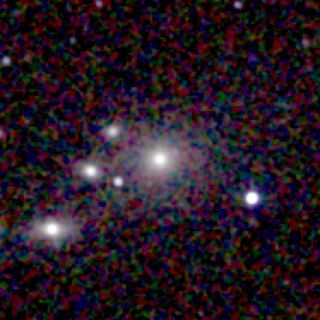
NGC 7012 is a large, bright elliptical galaxy located about 380 million Light-years away from Earth in the constellation Microscopium NGC 7012 was discovered by astronomer John Herschel on July 1, 1834.
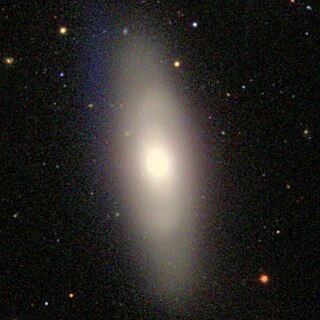
NGC 4461 is a lenticular galaxy located about 50 million light-years away in the constellation of Virgo. It was discovered by astronomer William Herschel on April 12, 1784. NGC 4461 is a member of Markarian's Chain which is part of the Virgo Cluster.

NGC 4489 is a dwarf elliptical galaxy located about 60 million light-years away in the constellation of Coma Berenices. It was discovered by astronomer William Herschel on March 21, 1784. NGC 4489 is a member of the Virgo Cluster.

NGC 4488 is a lenticular galaxy located about 60 million light-years away in the constellation of Virgo. The galaxy was discovered by astronomer William Herschel on December 28, 1785. NGC 4488 is a member of the Virgo Cluster.

NGC 4733 is a barred lenticular galaxy located about 55 million light-years away in the constellation of Virgo. NGC 4733 was discovered by astronomer William Herschel on March 15, 1784. NGC 4733 is a member of the Virgo Cluster.

NGC 4606 is a spiral galaxy located about 55 million light-years away in the constellation of Virgo. NGC 4606 was discovered by astronomer William Herschel on March 15, 1784. It has a disturbed stellar disk suggesting the actions of gravitational interactions. NGC 4607 may be a possible companion of NGC 4606. However, their redshifts differ by about 600 km/s, making it unlikely that they are a gravitationally bound pair. NGC 4606 is a member of the Virgo Cluster.

NGC 4503 is a barred lenticular galaxy located around 41 to 74 million light-years away in the constellation Virgo. NGC 4503 was discovered by astronomer William Herschel on March 15, 1784. NGC 4503 is a member of the Virgo Cluster.

NGC 4516 is a barred spiral galaxy located about 55 million light-years away in the constellation Coma Berenices. NGC 4516 was discovered by astronomer William Herschel on April 8, 1784. NGC 4516 is a member of the Virgo Cluster.

NGC 6040 is a spiral galaxy located about 550 million light-years away in the constellation Hercules. NGC 6040 was discovered by astronomer Édouard Stephan on June 27, 1870. NGC 6040 is interacting with the lenticular galaxy PGC 56942. As a result of this interaction, NGC 6040's southern spiral arm has been warped in the direction toward PGC 56942. NGC 6040 and PGC 56942 are both members of the Hercules Cluster.
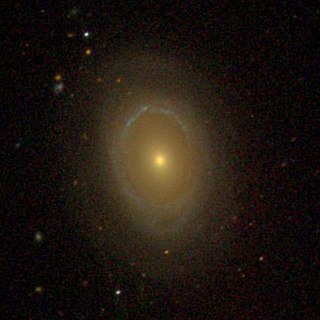
NGC 3884 is a spiral galaxy located about 330 million light-years away in the constellation Leo. The galaxy was discovered by astronomer William Herschel on April 27, 1785 and is a member of the Leo Cluster.

NGC 703 is a lenticular galaxy located 240 million light-years away in the constellation Andromeda. The galaxy was discovered by astronomer William Herschel on September 21, 1786 and is also a member of Abell 262.
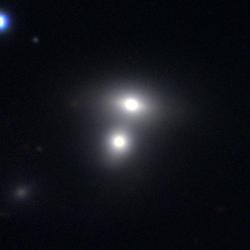
NGC 704 is a lenticular galaxy located 220 million light-years away in the constellation Andromeda. The galaxy was discovered by astronomer William Herschel on September 21, 1786 and is also a member of Abell 262.

NGC 714 is a lenticular galaxy located 190 million light-years away in the constellation Andromeda. The galaxy was discovered by astronomer Bindon Blood Stoney on October 28, 1850 and is a member of Abell 262.

NGC 4072 is a lenticular galaxy located 300 million light-years away in the constellation Coma Berenices. The galaxy was discovered by astronomer Ralph Copeland on April 3, 1872 and is a member of the NGC 4065 Group.

NGC 4091 is a spiral galaxy located 360 million light-years away in the constellation Coma Berenices. The galaxy was discovered by astronomer Heinrich d'Arrest on May 2, 1864. NGC 4091 is a member of the NGC 4065 Group and is a LINER galaxy.

The NGC 4065 Group is a group of galaxies located about 330 Mly (100 Mpc) in the constellation Coma Berenices. The group's brightest member is NGC 4065 and located in the Coma Supercluster.

NGC 7836 is an irregular or spiral galaxy located about 260 million light-years away in the constellation of Andromeda. It was discovered by astronomer Lewis Swift on September 20, 1885.

NGC 4313 is an edge-on spiral galaxy located about 50 million light-years away in the constellation Virgo. It was discovered by astronomer William Herschel on March 15, 1784. NGC 4313 is a member of the Virgo Cluster and is classified as LINER and as a Seyfert galaxy.

NGC 4316 is an edge-on spiral galaxy located about 70 million light-years away in the constellation Virgo. It was discovered by astronomer Wilhelm Tempel on March 17, 1882. NGC 4316 is a member of the Virgo Cluster and is classified as LINER and as a Seyfert galaxy.
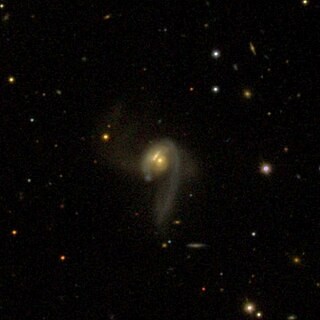
NGC 4320 is a peculiar galaxy located about 370 million light-years away in the constellation Virgo. It was discovered by astronomer Heinrich d'Arrest on April 15, 1865 and is a member of the NGC 4325 Group.




















